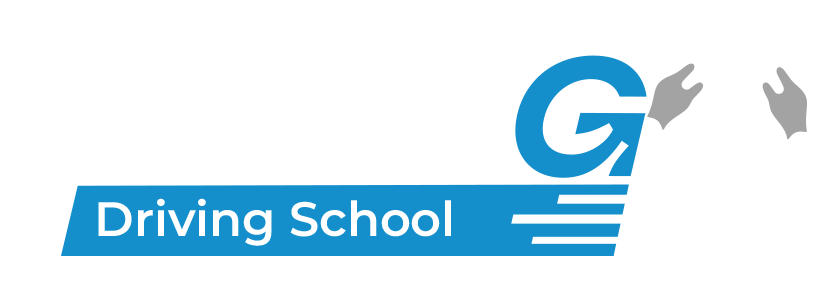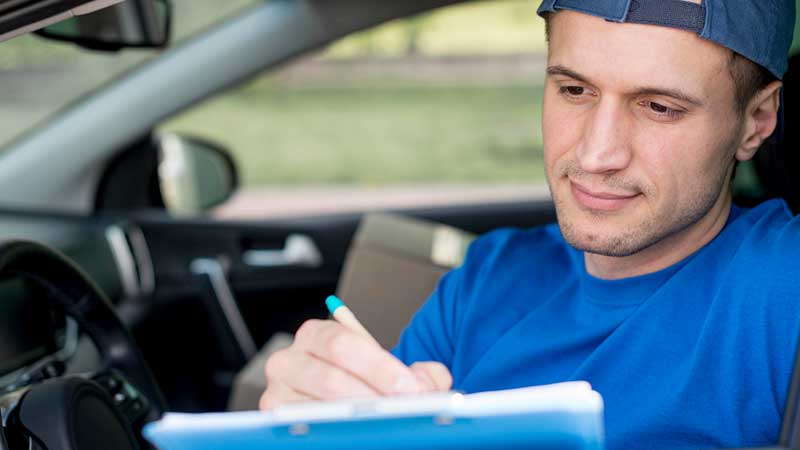The first part of the Drive Test takes place in less challenging driving situations. You’ll be asked to turn left and right at intersections, change lanes, reverse park or do a three point turn, and then stop the car so the testing officer can calculate your score for the first part of the test. If you pass, you will continue on to the second part of the test. If not, you’ll return to the VicRoads Customer Service Centre to receive feedback about your driving.
The second part of the test takes place on busier roads. You’ll be assessed when you turn left and right at different intersections, change lanes, merge with other traffic, and drive along straight and curved sections of road. At the end of the test you will return to the VicRoads Customer Service Centre and receive your results.
During the test, the testing officer will award points for your driving performance when you demonstrate the following safe driving skills:
Observation
Safe drivers are aware of other road users and road conditions at all times while driving. You should look ahead of your car and use head checks and your mirrors to maintain a high level of awareness – especially when turning
at intersections, stopping or slowing, changing lanes, and entering or leaving the flow of traffic.
Signal use
Safe drivers communicate their intentions to other road users. You must signal for long enough to warn other drivers and road users (at least three seconds, provided this does not cause an unsafe situation) before turning, diverging or changing lanes and for at least five seconds if you’re pulling out from the kerb.
Gap selection
When moving into the traffic flow, safe drivers carefully observe traffic and then choose safe gaps so other drivers don’t have to take action to avoid a crash. They also choose the first safe gap to enter and don’t cause unnecessary delays to other road users. You must carefully observe the traffic and choose the first safe gap when moving into traffic from an intersection, when merging, or when starting off from the kerb.
Speed choice
Speed choice is a key issue for safe driving. Exceeding the speed limit by as little as 5km/h increases your crash risk. Safe drivers do not exceed the speed limit, but when it is safe to do so they drive close to the speed limit so that traffic can flow smoothly. They continually monitor traffic and road conditions and adjust their speed if needed. You must show that
you can drive at a suitable speed within the speed limit, which is safe for the conditions.
Following distance
Following other vehicles too closely is a significant cause of crashes – especially for young drivers. Safe drivers leave sufficient distance between their car and vehicles in front so there’s time to deal with unexpected events. You must leave at least two seconds between you and any vehicle ahead — and longer in poor driving conditions.
Lateral position
Safe drivers choose the best lane to drive in, steer a smooth path, follow a safe and legal path when turning at an intersection and stay completely within their lane. They keep a safe distance between their car and other road users, including parked cars. During the test, you must choose an appropriate lane, position your car safely within the lane and follow a safe and legal path at all times.
Stop position
When you are required to stop – for example at Stop signs, traffic lights, and crossings – you must stop the car in the correct position. Safe drivers stop close to (but not over) the Stop line. This ensures the safety of other road users and gives the driver the best opportunity to detect potential hazards and to select a safe gap before moving off.
Control
Safe drivers are in full control of their vehicle at all times. To demonstrate this you must accelerate and brake smoothly during all manoeuvres. If you are driving a manual, you must avoid stalling the engine and use the clutch and gears smoothly. You must not coast in neutral or with the clutch disengaged for more than 50 metres.
Parking
Most Drive Tests include a reverse parking task to assess your ability to control the car at slow speed.
You must show you can signal correctly, look for potential hazards behind the car and complete the parking task safely and efficiently. You must finish with the car parked near the kerb and at a safe distance from the vehicle in front.
You also need to move off again safely by signalling correctly and selecting a safe gap.
Three point turn
If there is no opportunity to do a reverse parking task, you may be asked to do a three point turn. You must show you can look for potential hazards before and while making the turn and then while reversing the car. You are allowed to use a driveway when making the turn, but you must not drive onto private property. You should not hit or mount the kerb. You need to use your indicators correctly and move off on the correct side of the road.
To help ensure you pass your test, we offer comprehensive pre-test preparation, personalised feedback, and targeted practice sessions to address any areas of concern. Book with us today at https://durangodrivingschool.com/booking-online


